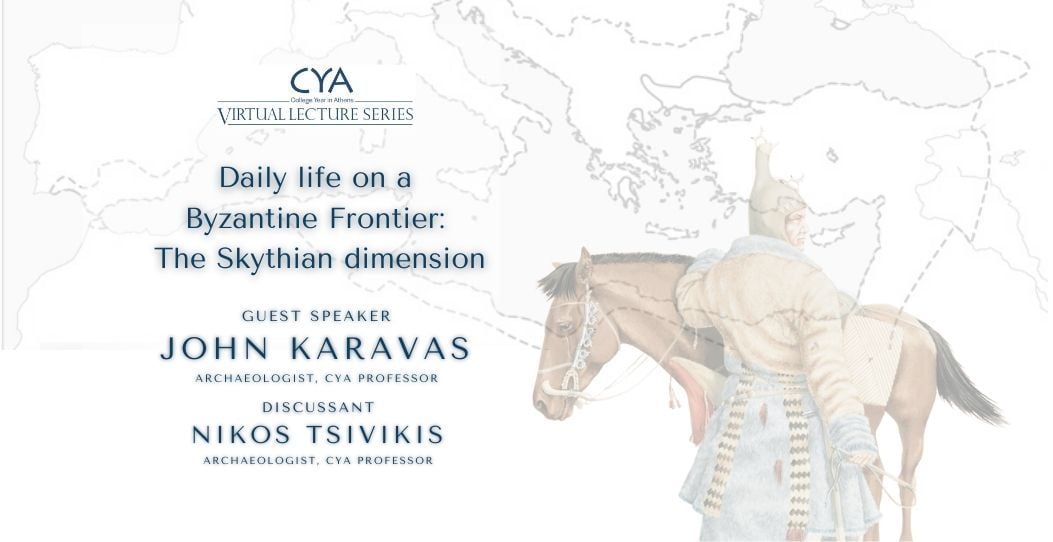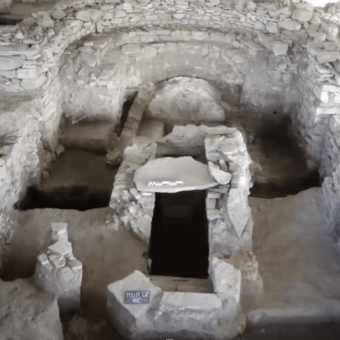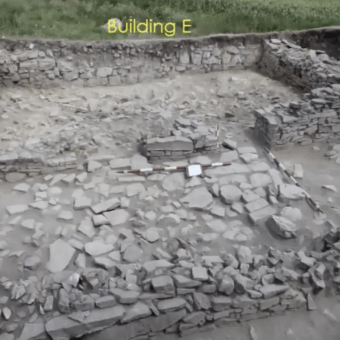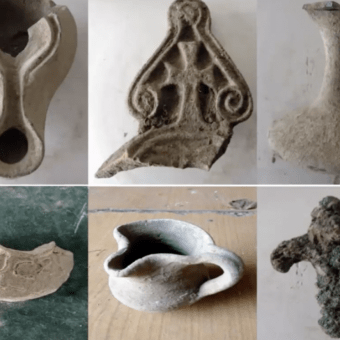
CYA Virtual Lecture Series – Daily Life on a Byzantine Frontier: The Skythian Dimension
On Wednesday, October 11, CYA hosted a lecture as part of its Virtual Lecture Series entitled: Daily Life on a Byzantine Frontier: The Skythian Dimension, and it was delivered by CYA professor of History and Archaeology John Karavas. Nikos Tsivikis, Byzantine archaeologist, art historian, and CYA professor, was the evening’s discussant.
Executive Chair of the Board of Trustees Alexis Phylactopoulos opened the lecture, warmly introducing the speaker and discussant.
“A great opportunity to tell people what Ι was up to for about 12 years of my life,” said Karavas, as he opened his lecture and began introducing the audience to the site he excavated between 2008 and 2020, Halmyris.
Karavas began by giving a brief history of the region and the excavations in the area. Halmyris is situated near the Danube Delta and there are important advantages in its location, as the town had the ability to control and monitor activity in the Danube and routes towards and from the Thracian Sea.
Karavas also described the site’s long history of occupation throughout the ages. The excavations revealed that new architectural features were added during the Late Roman period, such as fortifications and settlements dedicated to veterans of the Roman fleet. Karavas spoke of the interconnectedness with every Roman fortification on the frontier that led all the way to the area of modern France. Halmyris is at the end of the line, the very last fortified site one would encounter at the time.
“It is, however, the Late Roman-Byzantine period between the 4th and 7th centuries CE in which Halmyris reaches the peak of its achievements,” says Karavas, giving examples of mentions on the narratives of the most important sources from this period.
Before reaching the main focus of his lecture, Karavas went through the history of the excavations, speaking about special finds including an almost intact private bathhouse for Roman commanders and an early Christian Basilica where the remains of St. Epitect and St. Astion were found.

Reaching the main focus of the lecture, Karavas began describing the finds from the excavations between 2016 and 2019.
The excavation of a mysterious building (building E) gave a very good idea of the relevant chronology of its construction, looking at the building techniques and materials. The discovery of coins and other finds led to several hypotheses: It could have been a customs station, a treasury, perhaps of religious function, or even the residence of an archbishop.


Continuing, Karavas spoke about the excavations of the Eastern Barracks, which gave an indication of a transition from a purely military site, to a gradually fortified settlement with only a skeleton military crew.
Lastly, Karavas showed the excavations of Tower 3, one of 13 at the beginning of Halmyris’ history and one of 2 by the time of the Early Byzantine period. Here, among other discoveries, archaeologists were surprised to find a sarcophagus that was used as a pillar for the support of the lower part of the tower!
In his final observations, apart from the decline of military vigilance and some fascinating findings in collaboration with forensic anthropologists regarding nutrition, Karavas took some time to focus on the pervasiveness of the Greek language and Greek artistic patterns, as shown by the material culture.
“Halmyris is a true melting pot in which the Greek and Roman element is a minority of the overall population. Yet, the material culture shows Greek was fully dominant.”
Karavas displayed various linguistic and cultural examples. Watch the video below for one of his favorite findings on this subject
We thank John Karavas for this rare and useful glimpse into the function of a Late Roman – Early Byzantine fort on the Danube.
An engaging discussion and questions from the audience followed.
For a full recording of the lecture click here






